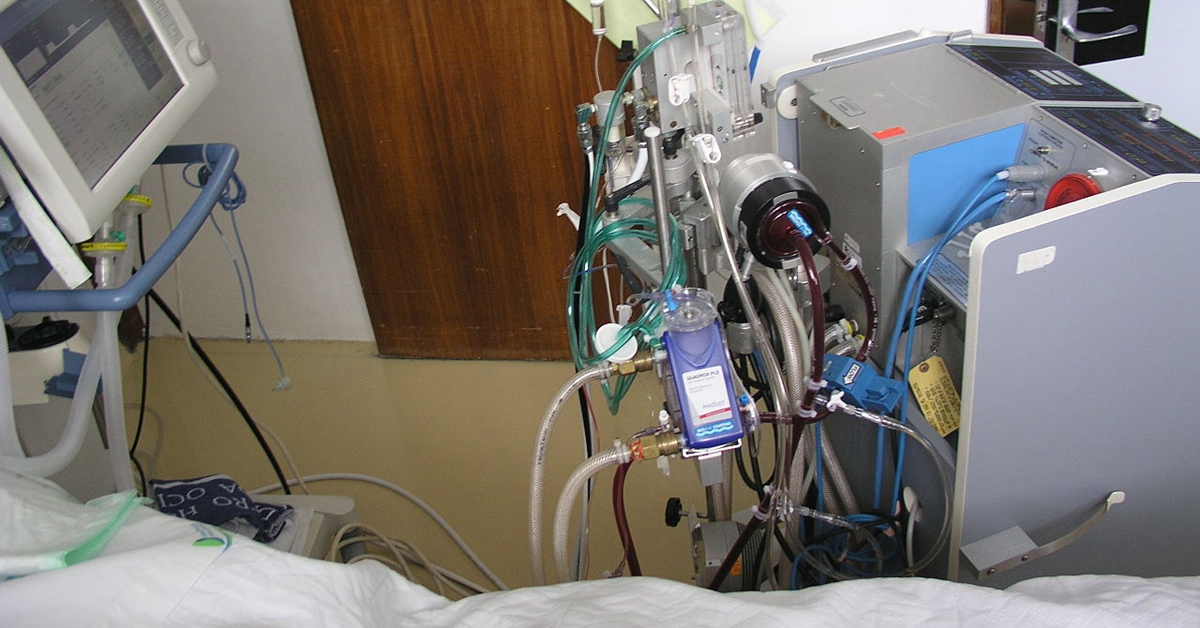作者:蔡依橙

ECMO 葉克膜,究竟能不能用在器官捐贈者身上,讓一個捐贈者能產出更多的器官,換取更高的收益,在台灣是個很敏感的議題。
我們來看看,中國官員的說法,與國外的報導。以及,西方學術社群,這幾個月對中國移植研究的新發現與新看法。
葉克膜用於腦死捐贈者
中國衛生機構主管級官員 Yanhong Guo(應為 國家衛生和計劃生育委員會 醫政醫管局 郭燕紅 正司局長級),在 IF=3.911 分的 Hepatobiliary Surgery and Nutrition 期刊發表文章「器官捐贈的中國模式」,稱「在中國,我們提供高品質的專業服務…,例如應用葉克膜在腦死或心跳停止捐贈者身上,多臟器移植,以及機器灌流。」
也就是說,中國官方證實,他們「有」把葉克膜用在捐贈者身上,而且引以為傲,稱為中國模式。
In China, high-standard professional service has been provided to ensure comparable international transplant outcome, yet with much lower medical cost the development of deceased organ donation stimulates and promotes innovations in transplant technology, such as the application of extracorporeal membrane oxygenation (ECMO) in DBCD donors, multivisceral organ transplantation and machine perfusion.
The “Chinese Mode” of organ donation and transplantation: moving towards the center stage of the world / Yanhong Guo (Bureau of Medical Administrative Authority, National Health and Family Planning Commission, Beijing 100000, China) / Hepatobiliary Surg Nutr. 2018 Feb; 7(1): 61–62.
這其實是 2018 年 2 月就刊登的文章,很訝異地,在 2018 年 11 月台灣縣市長大選時,依然有非常多的人,認為葉克膜不可能用在器官捐贈者身上,並把一切的討論,視作對特定候選人的攻擊。
至於為什麼要裝葉克膜?New York Post 的報導,針對 2019 年目前有的證據與訪問作了整理,提到:
「20 年前,一個受害者身上只能取得一或兩個器官,可能是兩個腎臟或一個心臟,其他的器官像是肺臟或肝臟,會因為缺氧太久,而不能使用。…
但如果將受害者裝上葉克膜,就能讓每個器官都保持新鮮,使用葉克膜之前,一個受害者價值 25 萬美金,用了葉克膜之後,價值 50-75 萬美金,甚至連皮膚都能賣。」
Despite China’s claims to the contrary, its transplant business is booming. And, thanks to a Western technology called ECMO — extracorporeal membrane oxygenation — it has become much, much more lucrative.
Twenty years ago, it was only possible to successfully harvest an organ or two — two kidneys, say, or a heart — from a transplant victim. The other organs, such as the lungs and liver, had to be discarded because they had been deprived of oxygen too long to be usable.
Now, the victims are put on an ECMO machine, which serves as an artificial heart and lung and keeps every last organ fresh enough to be harvested. Before ECMO, a victim’s few salvageable organs were worth maybe $250,000. Now, with ECMO, every organ can be harvested — even the skin — and the victim is easily worth two or three times as much. ECMO, which has saved countless lives in the West, has had the opposite effect in China: It has accelerated the killing of innocent people.
Chinese dissidents are being executed for their organs, former hospital worker says / Steven W. Mosher / June 1, 2019 / New York Post
覺得自己看法改變很丟臉嗎?別擔心,西方學術社群最近也剛開始有這樣的轉變。
證據的擴散,需要時間;看法的改變,也需要時間。只要不硬凹,真誠面對,並改變行為,就是好事。
指標期刊開始撤下中國移植論文
最近,西方學術界開始意識到,以前「科學歸科學、政治歸政治」的作法太鄉愿了,開始重新檢討。
今年 2 月(2019 年),一位澳洲學者 Wendy Rogers 在 BMJ open 發表重要研究,統計中國器官移植學術發表文章,並對照中國器官移植制度,發現中國文章多數都沒有說清楚器官的來源,也沒辦法提出捐贈者同意書。
說自己絕對沒有用 executed prisoners(被處決的關押者)的文章,卻都是在中國根本還沒建立自願器捐流程之前。
445 included studies reported on outcomes of 85 477 transplants. 412 (92.5%) failed to report whether or not organs were sourced from executed prisoners; and 439 (99%) failed to report that organ sources gave consent for transplantation. In contrast, 324 (73%) reported approval from an IRB. Of the papers claiming that no prisoners’ organs were involved in the transplants, 19 of them involved 2688 transplants that took place prior to 2010, when there was no volunteer donor programme in China.
The transplant research community has failed to implement ethical standards banning publication of research using material from executed prisoners. As a result, a large body of unethical research now exists, raising issues of complicity and moral hazard to the extent that the transplant community uses and benefits from the results of this research. We call for retraction of this literature pending investigation of individual papers.
Compliance with ethical standards in the reporting of donor sources and ethics review in peer-reviewed publications involving organ transplantation in China: a scoping review / Wendy Rogers, et al. / BMJ Open. 2019; 9(2): e024473.
補充一下,由於當年的輿論壓力與西方調查報告接連出爐,中國政府曾在 2015 年,於 BMJ 公開宣稱,將不再使用「被處決的關押者」作為器官來源,也等於承認,2014 年之前是有的。
The head of China’s organ transplantation committee announced in December that the practice of harvesting organs from executed prisoners in China to use in transplantations would end on 1 January 2015.
China to stop using organs from executed prisoners for transplantations / BMJ 2015; 350
Wendy Rogers 的這篇文章,喚醒了很多雜誌的主編,開始重新檢討過去的中國器捐研究,其中 PLOS ONE 與 Transplantation 在上個月就撤掉了 15 篇,而腎臟科由於是移植大宗,各頂尖腎臟期刊也開始表達對這個議題的關注。
In the past month, PLOS ONE and Transplantation have retracted fifteen studies by authors in China because of suspicions that the authors may have used organs from executed prisoners.
Two other journals, the Clinical Journal of the American Society of Nephrology and Kidney International, have recently issued expressions of concern for the same reason.
Journals retract more than a dozen studies from China that may have used executed prisoners’ organs / Retraction Watch / Aug 14 2019
Transplantation 的主編也說:「雖然事後看才知道,但我們現在已經可以很確定,中國當年的移植器官,多數都是來自於被處決的人們。」並認為這樣的文章,不夠資格被稱為科學發現。
It is clear, with the benefit of hindsight, and through the Chinese Government’s subsequent clarifications of their practices, that most deceased donors were from executed people, before the Government implementation of Donation after Circulatory Death in 2010 in selected hospitals and widely from 2015. This was not transparent to reviewers and editors at the time of original acceptance for publication of these articles.
Organs From Executed People Are Not a Source of Scientific Discovery / Chapman JR, et al. / Transplantation / August 2019 – Volume 103 – Issue 8 – p 1534–1535
我們進一步要思考的是,如果,葉克膜被用來協助剝削被處決的關押者,這樣,即使技術高超、效果卓越,仍夠資格被稱為科學嗎?
蔡依橙的閱讀筆記
